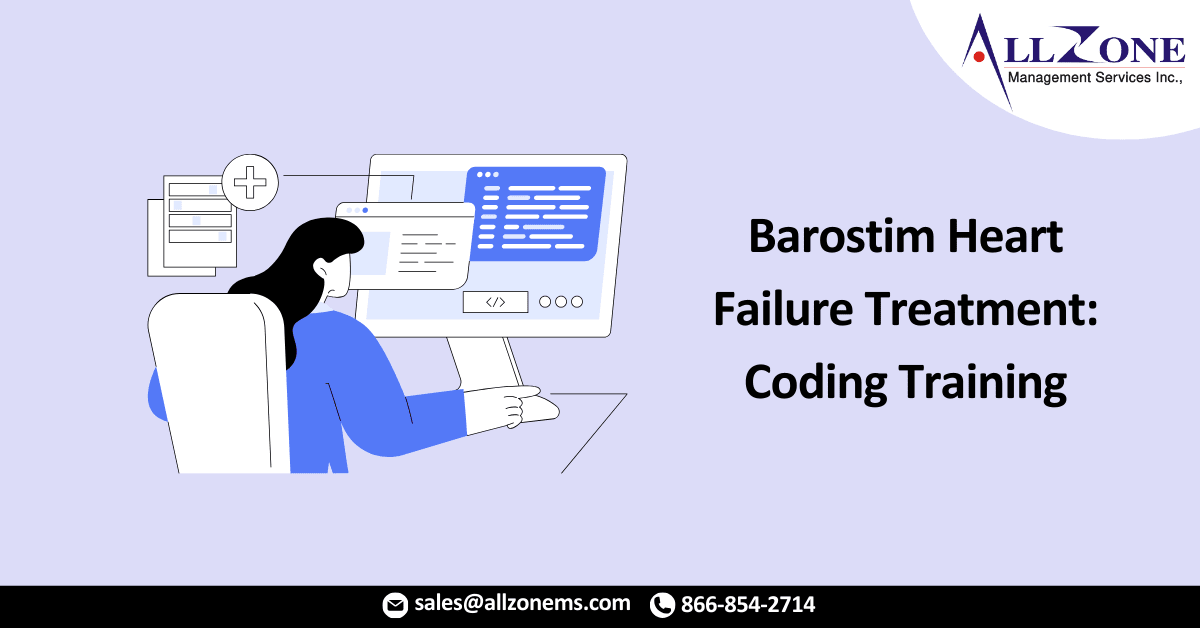The Centers for Medicare & Medicaid Services (CMS) has begun covering a portion of the device cost for Barostim Neo, a neuromodulation device for treating chronic heart failure.
In late 2020, the Centers for Medicare & Medicaid Services (CMS) announced that it would begin covering a substantial portion of the cost of implantable heart failure devices for treating chronic heart failure. These devices are designed to treat patients by electrically activating the baroreflex, the body’s natural mechanism for regulating cardiovascular function.
The initial announcement stated that Medicare would pay for up to 65 percent of the device cost for the next three years. CMS also noted it would cover the device’s implant procedure costs. Thus, any facility performing these procedures today is looking at a significant reimbursement (and potential claim risk, if not properly processed). The 2022 national APC (Ambulatory Payment Classifications) payment rate (Medicare reimbursement under the Outpatient Prospective Payment System, or OPPS) is $30,063.48.
Barostim™ is one such option for heart failure patients, with reduced ejection fraction that uses autonomic stimulation to improve symptoms. Barostim™ is a simple and implantable device that works by stimulating baroreceptors – natural sensors in your body that tell the nervous system how to regulate heart, kidney, and vascular function – and, in turn, the baroreflex These effects reduce the heart’s workload and help it pump more efficiently, helping to relieve the symptoms of heart failure.
Baroreflex Activation Therapy is delivered by an implantable pulse generator (IPG), the BarostimNEO™. The Barostim System comprises the Barostim NEO IPG, the Carotid Sinus Lead, and a simple, intuitive Programmer.
The Barostim System is implanted in a safe and straightforward surgical procedure. After a simple mapping procedure, the Carotid Sinus Lead is sutured to the carotid sinus. The BarostimNEO generator is inserted in a standard device pocket, and these procedures typically take less than an hour, usually performed on an outpatient basis. These systems relieve the symptoms of heart failure and provide a notable, improved quality of life for patients.
There are many nuances involved in the coding and billing for these devices and implementation. Facilities that have recently begun providing this service may be particularly vulnerable to the risk of rejected claims if the proper training and implementation are not performed. Training should include clinical information, as well as billing and coding information, to ensure that all aspects of the appropriate procedure and setup are addressed. It can take months before a hospital discovers issues with claim payments, and with an average payment rate of $30,000, this cannot be overlooked.
Accurate coding and proper chargemaster setup are essential for correct reimbursement. When setting up the charge for the device in the chargemaster, the device HCPCS code, C1825, must be assigned and present on the claim to meet CMS’s procedure-to-device requirements and avoid claim rejection.
Include health information management (HIM), finance, and billing when educating on relevant codes and billing guidelines. Policies concerning reimbursement are complex; thus, training on proper coding will support the submission of accurate and appropriate claims for services.
All the relevant CPT® codes for this device and procedure include the following:
Implant Procedure: 0266T
Implantation or replacement of carotid sinus baroreflex activation device; total system (includes generator placement, unilateral or bilateral lead placement, intra-operative interrogation, programming, and repositioning, when performed)
System Implant: C1825
Generator, neurostimulator (implantable), non-rechargeable with carotid sinus baroreceptor stimulation lead(s)
Interrogation Device Evaluation: 0272T
Interrogation device evaluation (in person), carotid sinus baroreflex activation system, including telemetric iterative communication with the implantable device to monitor device diagnostics and programmed therapy values, with interpretation and report (e.g., battery status, lead impedance, pulse amplitude, pulse width, therapy frequency, pathway mode, burst mode, therapy start/stop times each day)
Interrogation Device Evaluation with Programming: 0273T
Interrogation device evaluation (in person), carotid sinus baroreflex activation system, including telemetric iterative communication with the implantable device to monitor device diagnostics and programmed therapy values, with interpretation and report (e.g., battery status, lead impedance, pulse amplitude, pulse width, therapy frequency, pathway mode, burst mode, therapy start/stop times each day), with programming.
Lead Replacement: 0267T
Implantation or replacement of carotid sinus baroreflex activation device; lead only, unilateral (includes intra-operative interrogation, programming, and repositioning, when performed)
Battery (Generator) Replacement: 0268T
Implantation or replacement of carotid sinus baroreflex activation device; pulse generator only (includes intra-operative interrogation, programming, and repositioning, when performed)
System Explant/Revision: 0269T
Revision or removal of carotid sinus baroreflex activation device; total system (includes generator placement, unilateral or bilateral lead placement, intra-operative interrogation, programming, and repositioning, when performed)
Lead Removal/Lead Repair: 0270T
Revision or removal of carotid sinus baroreflex activation device; lead only, unilateral (includes intra-operative interrogation, programming, and repositioning, when performed)
Device Explant/Device Revision: 0271T
Revision or removal of carotid sinus baroreflex activation device; pulse generator only (includes intra-operative interrogation, programming, and repositioning, when performed)
For More Information: https://icd10monitor.com/barostim-heart-failure-treatment-proper-procedural-and-coding-training-ensure-accurate-reimbursement/

